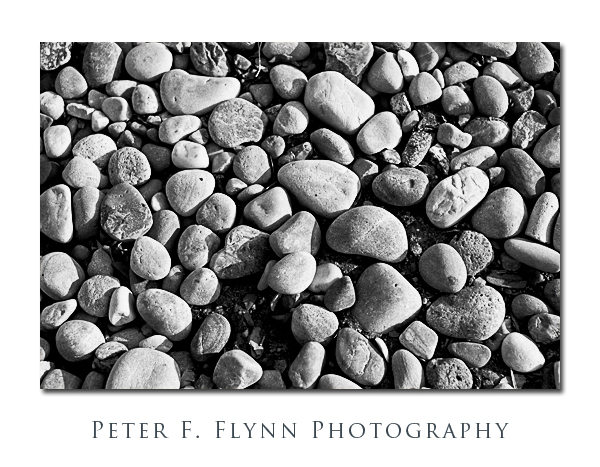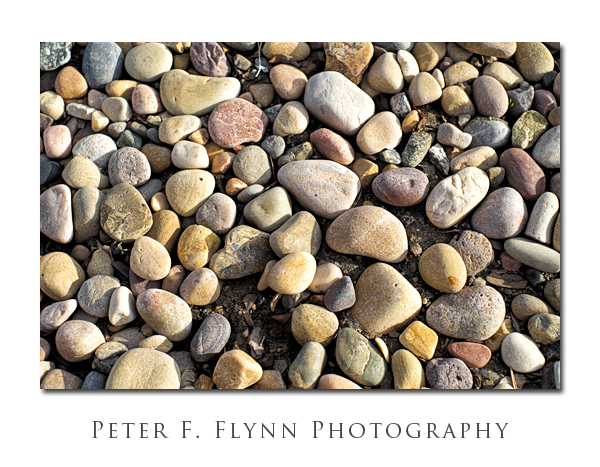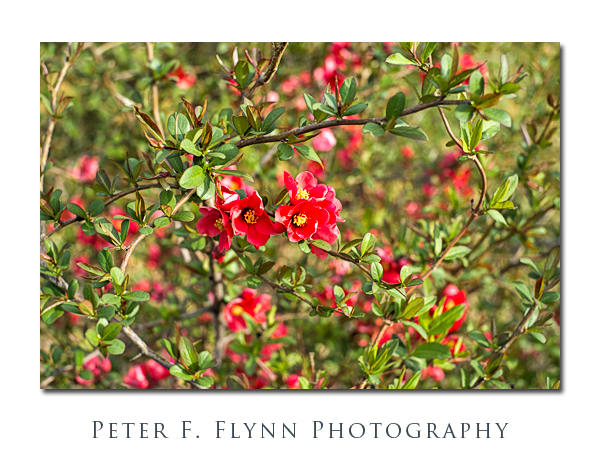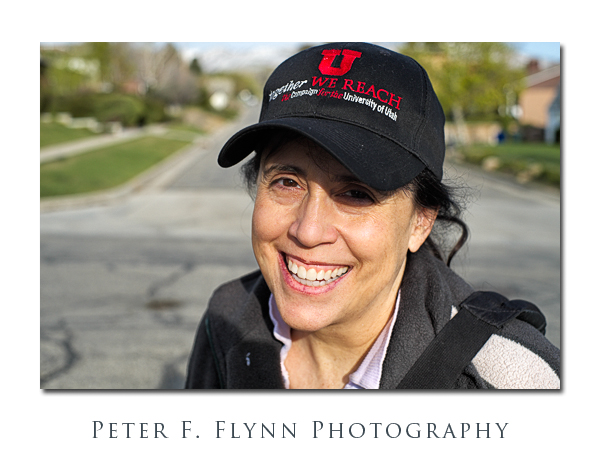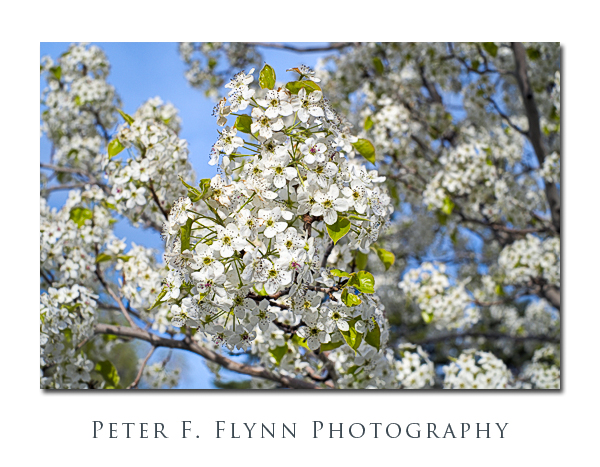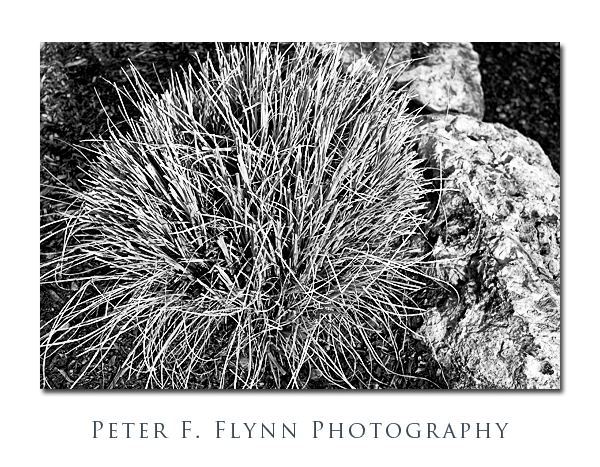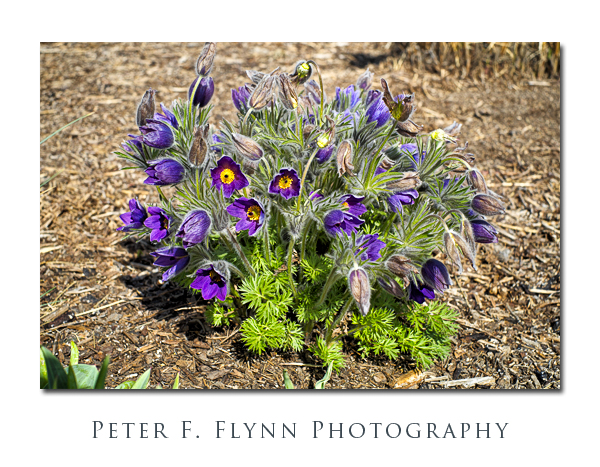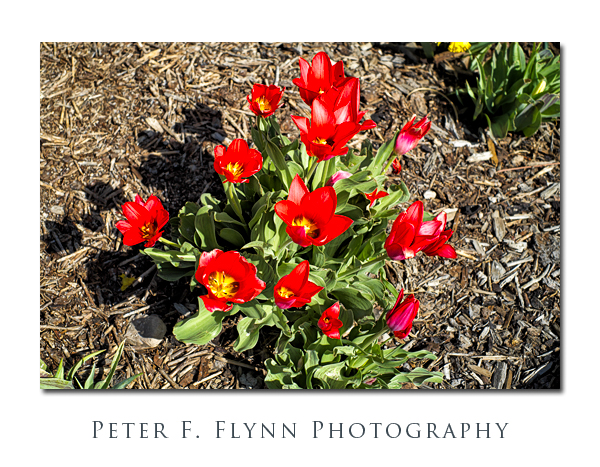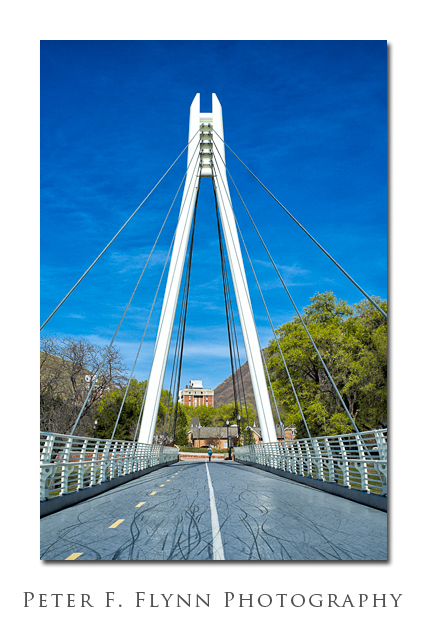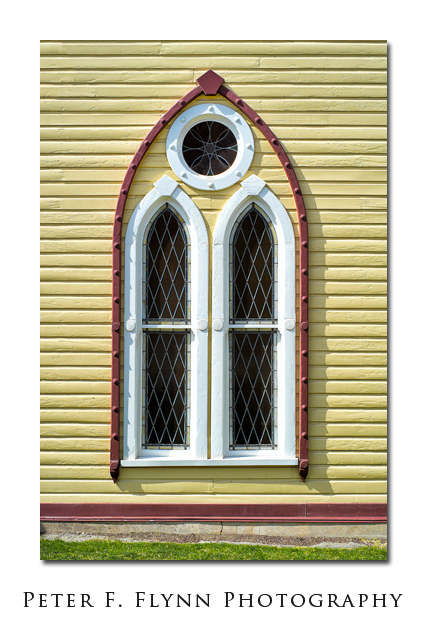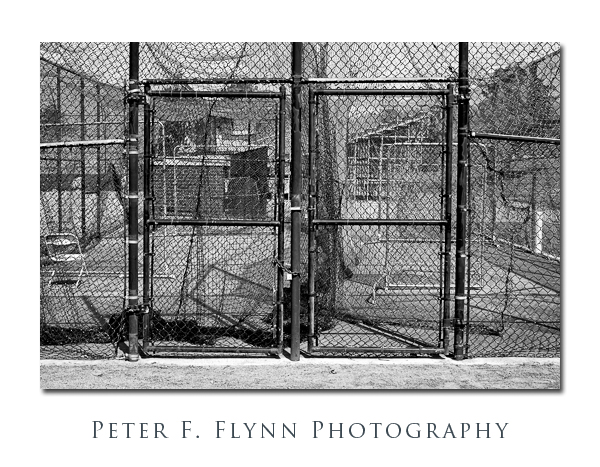I have now spent a few days with the new Fujifilm X-Pro1. I must say that thus far I am very impressed. The most important thing that I can report on to date is that the IQ is remarkably good. Easily the best I have seen on any 1.5/1.6-crop sensor. A number of folks have already posted RAW images. I hope to get around to showing some of my own images very soon, but here I’ll describe the basic camera control layout.
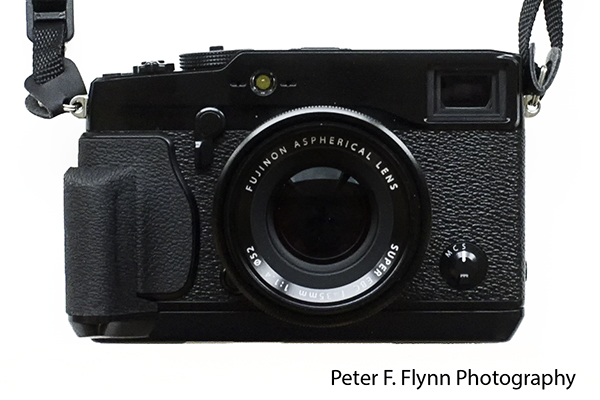
The image above show the front view of the X-Pro1. I have the optional hand grip attached – this grip makes handling the camera much more enjoyable. I’ve got the Fujinon 35mm f/1.4 mounted, which is the lens that stays on the camera 90% of the time. Aperture control is on the lens barrel. To the left and low of center of the lens is the lens release button – unnatural for a Nikon shooter. Above and to the left of the lens mount is the Viewfinder Selector switch – this toggles between of the optical viewfinder (OVF) and the electronic viewfinder (EVF). Above and to the right of the viewfinder selector is the AF-assist illuminator/self-timer lamp (yellow), and the small recessed holes on either side of the lamp are the microphone ports. The Focus Mode selector is located in the lower right corner in this view: single AF (S), continuous AF (C), and manual focus (M). The Viewfinder and Focus Mode selectors are well-placed, and in the case of the former, easily accessed from the shooting stance.
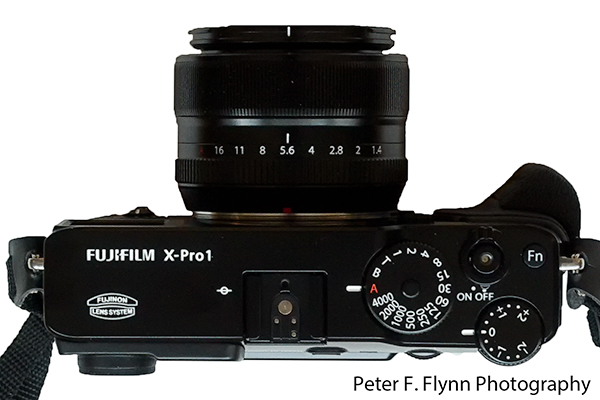
The image above show the top of the X-Pro1. In the center is the accessory hot shoe. The dial to the right of the hot shoe is the shutter speed and program mode control dial. A button in the center of the dial must be pressed to change the dial position. When the dial is set to the A position, aperture priority shutter speed selection is engaged – this is my standard setting. Selecting a specific shutter speed sets shutter priority in 1 EV steps from 1/4000 second to 1 second. Long exposures, from 2 seconds to 30 seconds in 1/3 EV steps, may be set by first moving the shutter speed dial to the T position (Time) and specifying the desired values by using the selector on the back of the camera (see below). Exposures of arbitrary length may be set by moving the shutter speed selection dial to the B position (Bulb). The camera on/off switch and the shutter release are located just to the right of the shutter speed dial. An exposure compensation dial is located on the lower right hand corner – you can add/subtract up to 2 EV in 1/3 EV steps. A function button (Fn) is located on the upper right hand corner – the default behavior of the Fn button is to change, and you most probably want to leave it on that setting. Placement of control buttons, and dials, and the on/off switch are all very intuitive.
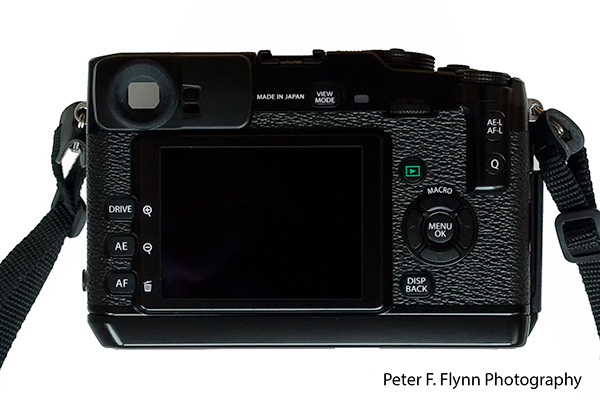
The back of the camera is shown above. The viewfinder is located in the extreme upper left corner. Two small plastic rectangles just to the right of the viewfinder are eye sensors that toggle the EVF on/off (see below). As a lifelong left-eye SLR/DSLR shooter, the location of the viewfinder takes a little adjustment, e.g., which is mostly keeping your big greasy nose from smudging-up the LCD monitor. Shoot right-eyed? Death first.
Below the viewfinder is the Drive button that controls eight capture modes: still image, continuous (6fps/3fps), exposure bracketing using three shots made at 6fps (select between metered value and either +/- 1EV, +/- 2/3 EV, or +/- 1/3 EV), ISO bracketing using three shots processed at metered value and either +/- 1EV, +/- 2/3 EV, or +/- 1/3 EV, File Simulation bracketing (processes a single image into three specified jpeg outputs, e.g., PROVIA, Velvia, ASTIA, monochrome, etc., Dynamic Range bracketing (auto HDR with 100%, 200%, and 400% expansion of the EV at a 6 fps repetition rate), Motion Panorama, and Movie. One funny/weird thing: when shooting in continuous mode, the file naming changes from that used in single-shot mode – why?!!! In playback mode, the DRIVE button functions as a zoom-in control. I’ve been shooting in still image mode pretty much exclusively – it’s a rangefinder!
Below the DRIVE button is the AE button that controls how exposure metering is conducted (PHOTOMETRY): switch between MULTI (scene analysis), SPOT , and AVERAGE (straight pixel average). I have been using MULTI exclusively with excellent results. In playback mode, the AE button is the zoom-out function.
Below the AE button on the lower left corner of the back is the AF button that together with the MENU/OK selector and the Wheelcommander adjusts the position and size (respectively) of the focus target. In playback mode the AF button is the trash function.
Just right of center along the top is the View Mode button which allows the user to choose of of the three view modes, which are LCD only, viewfinder only, and an auto-toggling mode that switches the display from the LCD to the viewfinder when your eye approaches the viewfinder. The OVF and EVF are both excellent. The EVF/LCD toggle sensor works perfectly and the EVF/LCD swap occurs instantaneously.
To the right of the View Mode button is a camera status light: five modes indicating focus lock (green), focus/exposure failure warning (blinking green), writing to card with capture possible (green/orange blinking), writing to card no capture (orange only), and lens or memory card failure (red).
Just a bit further to the right the small Wheelcommander Dial is used to navigate menus, review images, and to change values of capture parameter selections made from the Quick Menu display – this control combination works very well.
Directly below the Wheelcommander is a a dedicated image playback button. I’m a big fan of keeping the playback functions separated from capture control and thus like this arrangement.
Below and slightly to the right of the playback button is MENU/OK console, that allows the user to toggle macro mode on/off and navigate the menus. The menus are concise and the architecture is layed out in an a sensible manner. Adjustment of menu items can also be made using the Quick Menu buttons (see below).
Below the Menu console you will find the DISP/BACK button which controls the OVF, EVF, and LCD displays as well as menu navigation. The DISP function controls the display of camera settings in the OVF and EVF displays and LCD monitor. If the View Mode is set to OVF (see Viewfinder Selector and View Mode), the DISP/BACK toggles between the Standard Display that shows f-stop, shutter speed, ISO, EV compensation and the selected focus point, and the Custom Display that adds a 3×3 Framing Grid and a mini histogram display. The DISP function is similar when using the EVF , except that in this circumstance the Custom Display mode includes pretty much every relevant camera control parameter. If the LCD Monitor mode is selected then three options are available, which include a Detailed Display that shows camera control parameters only, and Standard and Custom modes that are the same as for the EVF mode. For the BACK function, at any menu level touching the DISP/BACK button will move the to next higher level of the menu tree, until you are moved out of menu review (same feature for the Quick Menu see below).
In the upper right hand corner of the back there are two buttons next to the thumb-grip. The upper button, AE-L/AF-L, locks exposure, focus, or both based on a menu setting. I’ve set the feature on focus-lock only since I am thus far finding that the MULTI exposure setting seems to work very well. The lower of the two button, Q, opens a Quick Menu access to most of the common camera control parameters. Navigation within the Quick Menu is accomplished using the 4-way MENU/OK selector and values are changed using the Wheelcommander dial.
Overall, I commend the Fuji people on sorting out a concise but natural and comprehensive camera control system. Nikon shooters should adapt to the Fuji system quite easily. The X-Pro1 has much to recommend it, and in my view there are a very few things that absolutely need to be addressed. Thus far encountered none of the power-up or memory card weirdnesses that some have previously reported. As I mentioned in the first report, the overall build quality is excellent but a curious exception is the battery/SD card cover, which is light plastic – BTW, the position of the SD card near the hinge makes it very difficult (damned near impossible!) to remove the SD card – I have reported both of these issues to Fuji (maybe a fix in X-Pro2?).
Copyright 2012 Peter F. Flynn. No usage permitted without prior written consent. All rights reserved.
